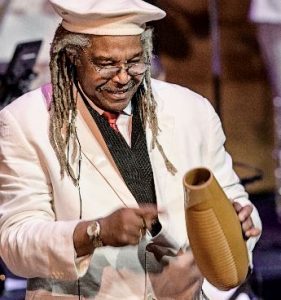This post is also available in:
 Español
Español
The Cuban güiro, the Dominican güira, and the Puerto Rican güícharo are all part of the same family of percussion instruments.
Although simple instruments, they are all vital to the sound of Latin music.
In this 4-part series, we’ll take a deeper look at the influence these instruments have had in Latin music. The impact of these instruments goes beyond the music of these three countries, as it stretches into the music of other Latin American countries, and been used in many other kinds of music.
Origins of the Güiro and Güícharo

The origins of the güiro are debatable. Most historians placed its origins in the Arawak or Taíno (an Arawak subgroup) native Indians that resided in Venezuela and the Caribbean. But there are others that place its origin in Africa and came over with the slaves.
I believe it could be a little of both. The Taíno developed these instruments out of dried calabash gourds, and the Africans may have developed something similar there. When the Africans got to the Caribbean as slaves, they were already familiar with the Taino’s güiro.
Commonalities Between Güiro, Güira, and Güícharo
The Cuban güiro and the Puerto Rican güícharo share the same roots, literally. They both come from the gourd out of dried calabash gourds. However, the güira is a metal “version” of the güiro.

All of these are idiophone instruments. This means that they are instruments that “the whole of which vibrates to produce a sound when struck, shaken, or scraped” (Google Dictionary).
The güiro and the güícharo can also be made out of resin. On the güiro, its resin version sounds very similar. However, on the güícharo version, the sound difference is more notable.
All of them are vital parts of the folk music of their respective countries.
Differences Between Them
I already mentioned one; the güira is made of metal as opposed to the dried calabash gourds for the others. Not only that, but the sound of the güira does not come from groves in its surface, but rather from the raspy surface it has.
The Cuban güiro is a much thicker instrument, and its grooves are wider and deeper than those of the Puerto Rican güícharo.
The güícharo’s wall is thinner and its grooves are thinner and shallower than the güiro’s.
Influence in Latin Music and Beyond
As I mentioned, these instruments play an important role in the folk music of their respective countries. Versions of these instruments have also influenced the music of many other Latin American countries, like in Panama, Colombia, Jamaica, and others.
So the güiro family of instruments has clearly influenced such music as the Cuban Son (and consequently, it later influenced Salsa) and Changüí; Puerto Rican Danza, Seis, Aguinaldo; Venezuelan Jaropo; Colombian Cumbia; Panamanian Tamborito and Cumbia, and Jamaican Reggae, Mento, and Ska among many others.
It has also been used in a variety of other musical genres for specific pieces, like in Jazz, Brazilian Cuíca, R&B songs by Marvin Gayle, and even in classical music by Stravinsky.
About This Blog Series
As you can see, this simple idiophone instrument has a very broad influence on the music of Latin America and beyond. In the next blogs, we’ll take a dedicated look at the güiro, the güira, and the güícharo.
Links:
http://michelconci.blogspot.com/2016/02/the-guiro-and-reggae.html
http://www.lacabanga.com/la-churuca-en-la-musica-folclorica-de-panama/


[…] my introduction to this blog series, I explained that the güiro comes from the Taino Indians. However, its use in […]
[…] I think about it, I’m amazed at how the güiro family of instruments, being so small and simple, can have such a big influence on Latin […]